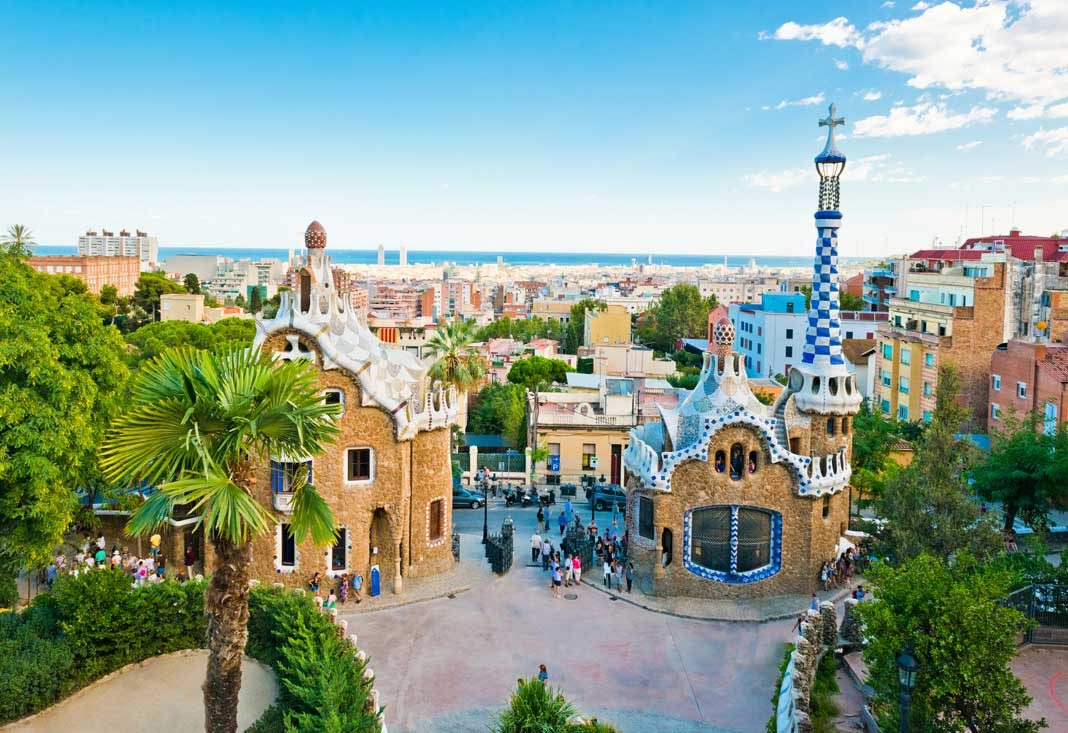Barcelona is a city built upon quirks and creativity, bursting with artistic culture and history, and thriving upon hip, urban street style. The Catalonian city of Barcelona is packed with exciting events, bars and cafés, and is absolutely raging with sought after historical sites that tourists flock to from all around the world. When you visit Barcelona, it is a challenge to ignore the eccentrically designed buildings that are scattered around the city; they are at the responsibility of the unique and influential architect, Antoni Gaudí. Gaudí was an enigmatic magician when it came to design, his inspiration and ideas are so abstract, that they have become synonymous to the vibrant city of Barcelona. Born in 1852 in Reus,the Spanish architect was bought to life when he attended art school in Barcelona, the thriving modern city that was exploring and discovering new and creative approaches to art and architecture. Here, he learned the tricks of the trade and became an expert in his field, becoming part of the Catalan Modernista Movement, which formed his nature based style of art. This combination of Art Nouveau and Gothic Architecture has become what we associate Antoni Gaudí with, as his legacy still persists through time, and is very much alive in the city of Barcelona. Now, the city is bursting with Gaudí designed buildings and his heritage remains something of interest to locals and tourists alike; thus, here is a list of just a select few of Gaudí’s architectural achievements in Barcelona.
Table of Contents
Sagrada Familia:
Towards the end of Gaudí’s life, he dedicated his time to the construction of his biggest project, and what has become the most famous of his works, the almighty Sagrada Familia, in the heart of the city. The cathedral began its journey of completion in 1892, and is interestingly still being built, with its date of completion expected to be around the year 2030, over 100 years after Gaudí’s death! The cathedral projects immense architectural achievements both through the exterior and interior. The interior phenomenally represents Gaudí’s interpretation of a forest, which it’s towering pillars and cleverly placed lighting, providing visitors with feels of being sheltered by the lengthy pillar trees, and more symbolically the protection of religion.
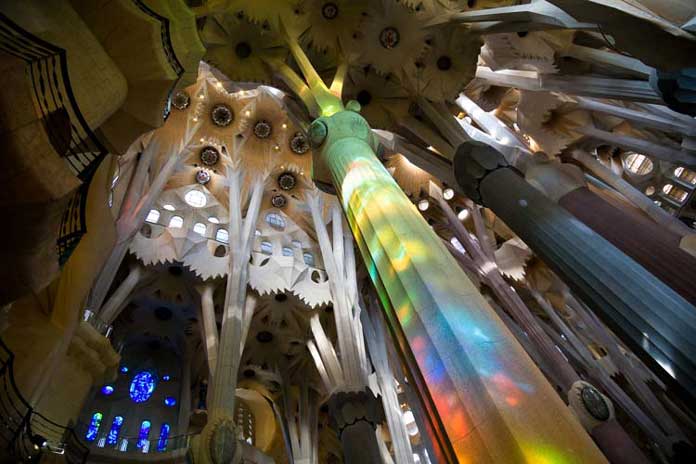 La Pedrera:
La Pedrera:
This sculptural masterpiece was designed by Antoni Gaudí for an elite, Barcelona based family who wanted their home to be created by the most prestigious architect around. La Pedrera is a residential building that exudes high quality imagination, and is a physical reminder of Gaudí’s unique creativity. Today, you can walk underneath the roof of La Pedrera to discover the intricate detail that has been imagined, such as the ceiling that reflects a creature’s rib cage, with its finely shaped bone like structure, highlighting Gaudí’s fascination with animalistic detail in architecture. However, the roof is the most incredible; dominated by eerie head shapes in dusty sandstone shades, Gaudí’s purpose here was to establish the fact that roofs do not have to be flat and dull, creativity should be present all over a building. La Pedrera has also been a world heritage site since 1984.
 Park Güell:
Park Güell:
Built between 1900 and 1914, Park Güell boasts unbeatable views of the immense city of Barcelona with the complimentary aspect of Gaudí’s exceptional artwork. It is a respected UNESCO world heritage site that projects complex gardens with a variety of depths and layers. It also holds dynamically, Gaudí style buildings, including his house, that are extravagant and proudly sat on looking the bustling city below. The steep, rustic hills are filled with gingerbread-style houses and quirky perks such as brightly colored, ceramic serpentine structures that are synonymously Gaudí. Park Güell is a perfect location for a sunny day stroll, as you can wonder at your own pace through the never ending secrets that are hidden in the park.
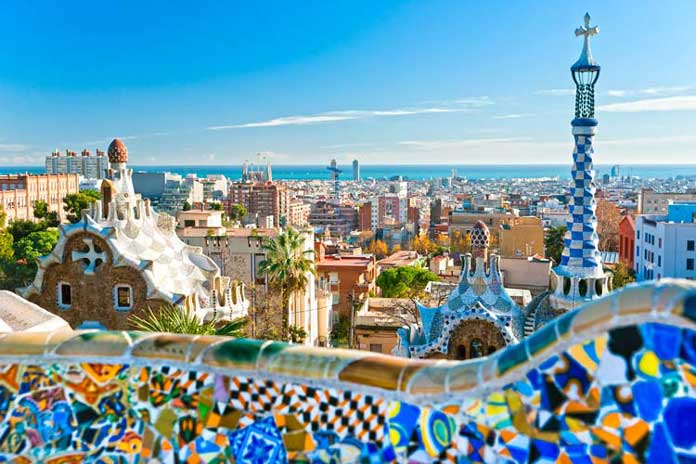
Casa Batlló:
Gaudí creatively restored this 1877 conventional home with a new lease of modern architecture in 1904, giving it a more demanding appearance and vibrant aesthetic. It lies in the heart of Barcelona, attracting tourists with its one of a kind exterior and quirky approach to what a home is required to look like. Casa Batlló holds animalistic features and brightly colored creative touches, particularly on the front facing balconies and windows; it almost looks as though it is being protected by creepy crawlies! The building uses typical constructive elects of Catalan Art Nouveau, such as ceramics and forged iron. Casa Batlló was highly critiqued at the time of construction for breaking city laws of what a building should look like, which ironically, is what Gaudí was trying to achieve. It now remains a central hotspot for visitors.
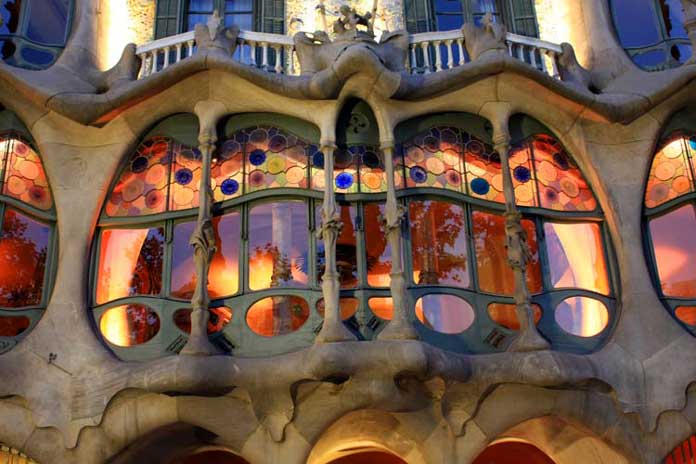
Colonia Güell:
Colonia Güell is one of Gaudí’s beautiful yet unfinished works, which lies in Santa Coloma de Geruellá near Barcelona. Finished in 1898, this irregular oval shaped church and crypt boast five gorgeous aisles, a central one and two more at each side. What is special about this Gaudí site is that it is influential in the Modernist art movement, as it shows a starting point of experimenting with new materials and techniques that became an inspiration for other artists. The charm and tranquil serenity of Colonia Güell is unbeatable; it was initially built as a place of worship for people in the manufacturing suburb, highlighting Gaudí’s diversity in architectural purposes. The techniques exercised at the Colonia Güell were the starting point for the foundations of the larger project, the Sagrada Familia.
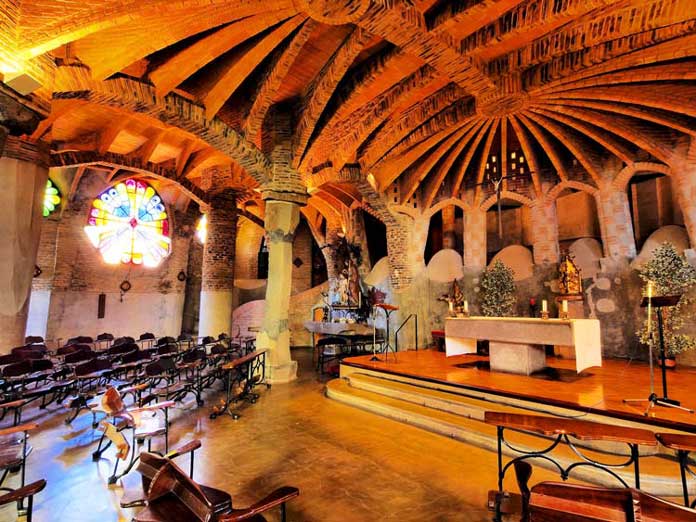
Legacy:
After Gaudí’s untimely and tragic death in 1926, his work unfortunately suffered a lengthy period of critique and neglect, with it still being regarded as baroque and overly eccentric. However, by the 1950s, Gaudí’s work was rediscovered with championing artists such as Salvador Dalí’s surrealist style art and Josep Lluís Sert’s architecture; it became looked upon with interest and respectability. Today, several of Gaudí’s masterpieces are renowned world heritage sites and tourist attractions in themselves. His work is presently regarded as creative contributions to the world of architecture and art, and continues to inspire artists today. His ability to practically design an entire city, especially one as gigantic as Barcelona is an architectural accomplishment to go down in history.

